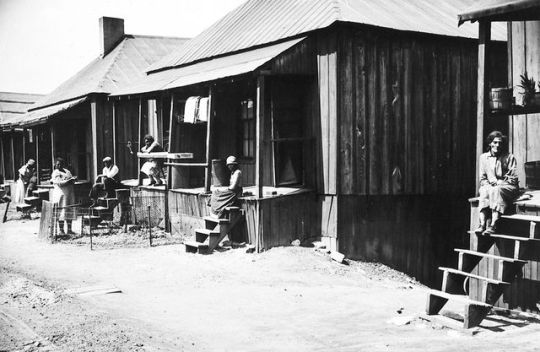Text
How genealogy is used to track Black family histories
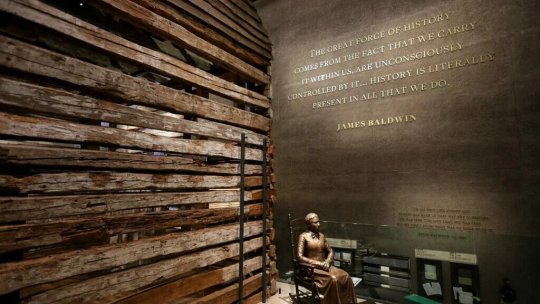
Our names are important to us. They tell us who we are and often, who we come from. So imagine suddenly discovering the last name you’ve always carried… might not actually be the name you should have.
Alex Neason began looking into her family’s history after discovering her great grandfather’s name was different from what she believed for her whole life. In her search to discover the story of that last name, she enlisted genealogist Nicka Sewell-Smith.
For Black Americans, genealogy can fill in the blanks left by the legacy of slavery and racism in the U.S. Services like the Freedmen’s Bureau and Slave Voyages provide free access to records and documents to help with that search. We talk about the power of genealogy in fostering knowledge and connection for Black Americans.
Source
If you click on the word “source,” it’ll take you to the article where you’ll see a LISTEN button. It’s a 30-minute audio that discusses the info provided in the article even further. Y’all know I’m big on getting people to trace their lineage. All that “we don’t know where we come from.” Who told you that? Everything in the US is in plain sight. Everything.
Discover your fam.
I assist others when they reach a roadblock, like getting past the “1870 wall.” But you can’t beat the feeling of you discovering them on your own. Unearthing your history, seeing photos, reading stories that were stored, and saying their names that haven’t been said for centuries. I’ve been tracing mine (scanning, logging) since my family reunion in 2005 through oral family history and obituaries (those are records), and since 2011 through databases of US archived records like ancestry.com (purchased by BlackStone) and familysearch.org (free database owned by the Latter-day Saints Church). There are others, but those are the main two I use for comparative results.
Archiving Centers, Census Records & Other Records
There are archiving centers in every state and DC that also keep records for those particular states and the federal capital. There’s a footnote on all records that tells you where they are housed. And please…Don’t just do a simple pedigree chart of your family tree. Get to know your great-aunts, great-uncles and cousins. It’s also helpful for seeing who lived around who (fam often lived next door to each other) and puts more of the pieces together of your complete family story. You can see the land and acres they owned or your fam today still owns, as well as if that land was stolen from them.
US census records go back to year 1790. Depending on when or if your ancestors were enslaved or free: you’ll find them attached to slave logs that have been made available online or kept in archiving centers (you go there), or or they’ll be listed on census records as free persons (1790-1710), free colored male/female (1820-1840), Black (1850-1920), Mulatto (1850-1890, 1910-1920) or Negro (1900, 1930-1950). “New” census documents are put on sites, like ancestry.com, every 10 years. As of 2023, you can only trace from 1950 to 1790. The 1960 census will be out in 2030. How to trace from 1950 to today, birth, death and residential records. So again, depending on the census year, you’ll notice your ancestors racial classification change throughout documents for obvious reasons.
Keep in mind that the the largest slave trade for the United States was the domestic slave trade. In house human trafficking and selling (in addition to property insurance of enslaved people and the selling of enslaved people as the building block of Wall Street’s stock exchange) is how US capitalism was built. So just because you know a lot of your people are from Tennessee, for example, it doesn’t mean that’s where that line stayed. I’ve found my ancestors throughout 7 states (so far). Another example, people with Louisiana roots damn near always have ancestors who were trafficked from early Virginia. Going beyond year 1790, records were kept in Christian and Catholic churches and old family history books so most of those documents are scanned online and/or still kept in the churches. I’m talking books books.
If your ancestors walked the Trail of Tears, or were caught as prisoners of war or trafficked to Indian Nations to be enslaved, you’ll find an Oklahoma Indian Territory and Oklahoma Freedmen Rolls section on ancestry.com. You can discover more info on sites, like the Oklahoma Historical Society. (Every state has its own historical society for archived genealogical records.)
Here’s the National Archives.
Also for Oklahoma, you may also find your ancestors in Indian Census Rolls (1855-1940) as [insert tribe] Freedmen, depending if they weren’t rejected through the “blood quantum” Dawes Rolls for not being the new light to white status. You’ll see their application and the listed questions & answers with or without a big void stamp. And on the census, you’ll even see the letter I (pronounced like eye) changed to the letter B. This is also for those in Louisiana.
Freedmen’s Bureau & Bank Records
There were Freedmen’s Bureau records and Freedman’s Savings Bank records in other states. To see if your ancestors had their records in those systems, you can search by their name. The state and age will pop up with people having that name. It’ll give you a wealth of other info, like all of the kids and other fam if they were present or mentioned to the person who logged that info in. With the Freedmen Bank records, you can see how much money your ancestors put in there (that was later stolen from them by way of the United States government), which is still there today. It’s the biggest bank heist in US history (that they try to keep hush hush) with the equivalence of more than $80 million in today’s value stored in there today. Back then, it was valued almost close to $4 million. Stolen wealth met with bootstrap lectures.
Here’s a short video on that heist:
youtube
Today the bank is called the Freedman’s Bank Building, located right on Pennsylvania Ave. Plain sight.
Trace your lineage.
There’s a lot more that I can list. But this is just the basics. Like I said before, it’s a more rewarding feeling when you discover your ancestors by yourself. You may reach roadblocks. Take a break. Try going the “Card Catalog” route on ancestry.com’s search engine. Don’t skip the small details.
SN: Slave Voyages isn’t a genealogical site, but rather a database for slave ship logs and the estimates of purchased Africans who became human cargo to be enslaved by country like USA, or by colonizers like Spain, Great Britain, etc.
129 notes
·
View notes
Text

Agostino Brunius : "Free Women of Color with Their Children and Servants in a Landscape", ca. 1770-1796. (Brooklyn Museum)
144 notes
·
View notes
Text

Mississippi’s first interracial marriage, August 1970.
31K notes
·
View notes
Text
On April 6th in Hoodoo History: The New York City Slave Revolt of 1712 🔥✊🏾
23 enslaved Afrikans set fire to NYC one year after the slave trade markets officially opened by the East River on Wall Street.

• On the night of April 6th, 1712, 23 Afrikans armed themselves with swords, knives, guns - laced with prayer & faith - and fire against White Slavers in the streets of NYC. They set an outhouse ablaze at the home of Peter Van Tilborough on Maiden Lane, at what was then the northern edge of Manhattan. They then picked off any White Slavers nearby who tried to stop it, from the cover of darkness. 9 Slavers were killed and 6 others were injured by nights end.
• On the following morning, the Governor of NY ordered two militias to "drive the island" aka capture & kill the rebels. 6 Afrikans took their lives in protest. The rest were burned alive or "broken" at the wheel. This unprecedented event hitting the streets of NYC quickly spurred the NY State Assembly to pass an act that would permit Slavers to punish Afrikans to the extreme measures by "not extending to life or member", thus cementing a new precedent for their cruelty in the North. In addition, Slavers would now be required to pay $200 dollars in security fees to the State & annuity for any freed Afrikans. Despite these stringent laws, NYC would see more slave rebellions in the next two decades; the next being in 1741.
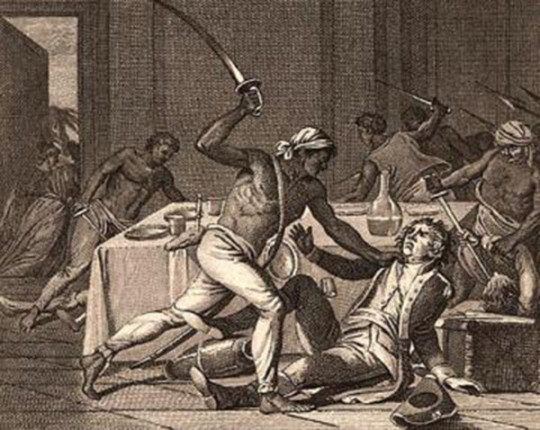
To be of Hoodoo is, and has always been, to fight back. Let this be a reminder, forever to be drilled into our psyches: We been fighting. We been sacrificing. We been spiriting. We been victorious.
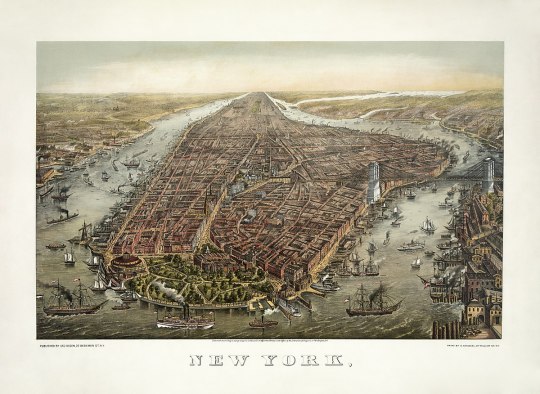
Today, 83 Maiden Lane sits in the infamous Financial District of Manhattan & now serves as the headquarters of the AHRC (Association of Help for Retarded Children). But beneath the cloak of modern amenities & reconstructive efforts, the once-scorched Earth still remembers the night of April 6th. This is where we made our stand. This, & the streets along the northern edge of Manhattan, is a place of power.
It is important to remember the when & WHERE of this event (and those that followed) as many to this day falsely believe that the North was somehow the righteous exception to the Eurocentric cruelties of Maafa. The North was not the exception then & is not the exception now. May we:
• Meditate on the cost of true freedom that these Ancestors paid in blood so we wouldn't have to.
• Pour libations for them, especially those of us residing on or near the Financial District, as this is where our Ancestors were bought & sold from the docks on the East River to Wall Street.
• Remember our plight & presence in the Northern states that have lightened their reputation with the mask of progressive thinking.

143 notes
·
View notes
Text

Today in Hip Hop History:
The film New Jack City was released March 8, 1991
215 notes
·
View notes
Text



Check this playlist out. A friend made this. It's very cool. Please share it around.
2K notes
·
View notes
Text
How the autobiography of a Muslim slave is challenging an American narrative -PBS Newshour on YouTube
youtube
I’m not sure why this is news. The enslaved person Zora Neale Hurston interviewed in Barraoon talked about praying facing the east. It’s very clear there were a lot of West Africans who were trafficked to America were Muslim. They estimate 20% but I wouldn’t be surprised if it was more.
1 note
·
View note
Text
7 notes
·
View notes
Text
Overtown, Miami, Fla. One Year after the Riots (December 28, 1983)
#black pple were also put on curfew for a while#there was another riot after the cop on trial was acquitted by an all white jury#I lived in fl my whole life#& only found out abt this looking thru fl archives#overtown#miami#florida#riot#1983#black history#police brutality#video
16 notes
·
View notes
Text

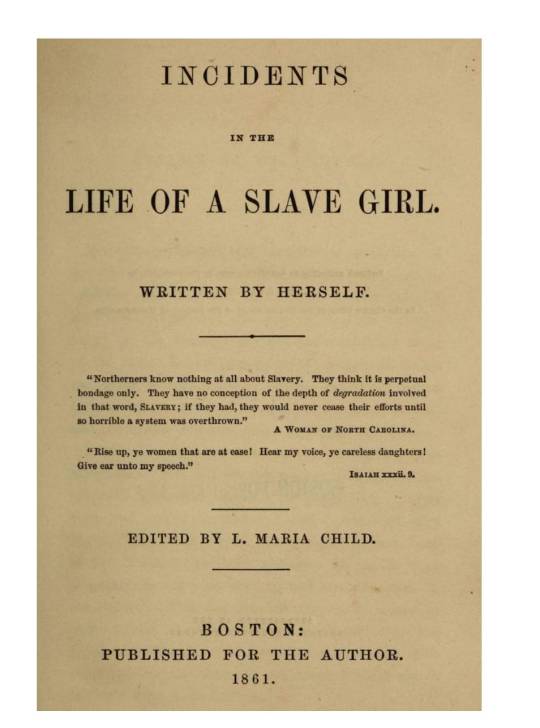
Harriet Jacobs... Author. Dedicated her life to social change. Abolitionist speaker. Reformer after escaping slavery. She hid in her grandmother attic for 7 yrs. Then she fled on board to Philadelphia in 1842.. the book she wrote was about sexual harassment and abuse of slave girls. She had to change the names of everyone in the book to protect herself and the people she loved.
75 notes
·
View notes
Text

Cudjo asking his enslaver for land after being freed with nothing to his name. From Barracoon: The Story of the Last “Black Cargo” by Zora Neale Hurston
18 notes
·
View notes
Text
Will you please help a gay black homeless 23 year old stay warm and eat until I’m able to get help finding housing? I’ve put my applications in for affordable housing near me and food stamps but last night I literally almost froze to death because my car can’t withstand being ran all night long after months of doing it in the summer and now the winter too.
p*yp*l: leotuals
c*sh*pp: alexandriad19
3K notes
·
View notes
Link
In “pre-colonial times,” wrote the late feminist scholar Niara Sudarkasa, women in West Africa were “conspicuous in high places.” They led armies, often played important consultative roles in politics, and in the case of the Lovedu people (present-day South Africa), they were even supreme Rain Queens. What it meant to be a woman in many African pre-colonial societies was not rigid. “Among the Langi of northern Uganda,” writes Sylvia Tamale, dean of the faculty of Law at Makerere University Uganda, “the mudoko dako, or effeminate males, were treated as women and could marry men.”
….
This practice of same-sex marriage was documented in more than 40 precolonial African societies: a woman could marry one or more women if she could secure the bridewealth necessary or was expected to uphold and augment kinship ties. The idea that a female could be a husband perplexed Europeans, and often lead to fantastical conclusions.
1K notes
·
View notes


